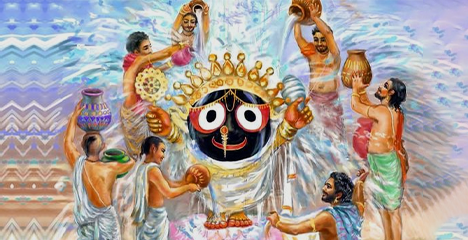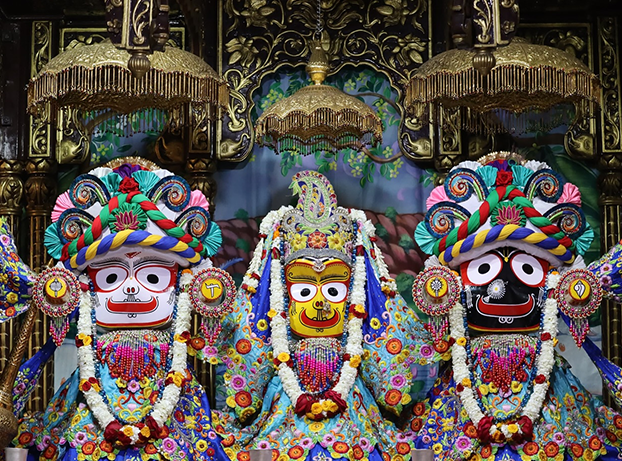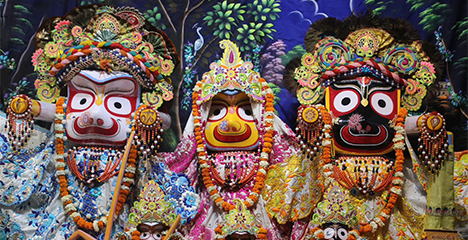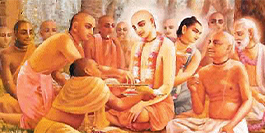Snan Yatra
The Divine Snan of Lord Jagannath
Snana Yatra of Lord Jagannath
The Snana Yatra, also known as Devasnana Purnima, is a spectacular bathing festival held at the Jagannath Temple in Puri, India. Celebrated on the full moon day of the Jyeshtha month, it’s considered the birthday of Lord Jagannath, the presiding deity. This historic tradition, believed to have been started by King Indradyumna, the temple’s builder, is one of the oldest continuously celebrated festivals in Puri.
History and Significance of Snan Yatra
Snana Yatra is a 15-day festival celebrated annually in the month of Ashadha (June-July). This sacred event revolves around the ceremonial bathing of the primary deities of the Jagannath Temple: Jagannath, Balabhadra, and Subhadra. Originating in the 12th century, Snana Yatra holds significant importance in the Hindu calendar. More than just a festival, Snana Yatra represents a profound spiritual journey for devotees. The ritualistic bathing of the deities symbolizes the purification of the soul and the renewal of spiritual energy. Participation in this festival is also believed to confer “punya” or spiritual merit, enhancing the spiritual well-being of those involved.


History and Significance of Snan Yatra
Snana Yatra is a 15-day festival celebrated annually in the month of Ashadha (June-July). This sacred event revolves around the ceremonial bathing of the primary deities of the Jagannath Temple: Jagannath, Balabhadra, and Subhadra. Originating in the 12th century, Snana Yatra holds significant importance in the Hindu calendar. More than just a festival, Snana Yatra represents a profound spiritual journey for devotees. The ritualistic bathing of the deities symbolizes the purification of the soul and the renewal of spiritual energy. Participation in this festival is also believed to confer “punya” or spiritual merit, enhancing the spiritual well-being of those involved.

Rituals and Celebrations of Snan Yatra
The festival commences with preparations for the deities’ ceremonial bath. The deities are adorned with new clothing and jewellery, and the temple is beautifully decorated with flowers and lights. On the first day, the deities are brought out of the temple and placed on a chariot, known as a “Ratha”. Devotees then pull the chariot to the nearby Gundicha Temple. The bathing ritual occurs on the second day of the festival. The deities are bathed in holy water while temple priests perform the sacred rituals. Following the bath, a grand procession escorts the deities back to the Jagannath Temple.
Gajanana Vesa
Thousands of pilgrims and visitors flock to witness this elaborate ceremony. The deities – Lord Jagannath, his brother Balabhadra, and their sister Subhadra – are adorned and taken in a procession to a specially prepared bathing platform. There, they are showered with sacred water from 108 pots, drawing a vibrant and joyous crowd. Adding to the wonder of Snana Purnima is the Gajanana Vesha, also known as Hati Vesha. This beautiful adornment sees the deities dressed as elephants. A legend explains this tradition. A devotee of Lord Ganesha, Sri Ganapati Bhatta, visited Puri on Snana Purnima but felt disappointed not finding Ganesha on the bathing platform. Lord Jagannath, understanding the devotee’s heart, manifested himself in the form of Ganesha for that day. This divine act is commemorated through the Gajanana Vesha, observed every Snana Purnima.


Gajanana Vesa
Thousands of pilgrims and visitors flock to witness this elaborate ceremony. The deities – Lord Jagannath, his brother Balabhadra, and their sister Subhadra – are adorned and taken in a procession to a specially prepared bathing platform. There, they are showered with sacred water from 108 pots, drawing a vibrant and joyous crowd. Adding to the wonder of Snana Purnima is the Gajanana Vesha, also known as Hati Vesha. This beautiful adornment sees the deities dressed as elephants. A legend explains this tradition. A devotee of Lord Ganesha, Sri Ganapati Bhatta, visited Puri on Snana Purnima but felt disappointed not finding Ganesha on the bathing platform. Lord Jagannath, understanding the devotee’s heart, manifested himself in the form of Ganesha for that day. This divine act is commemorated through the Gajanana Vesha, observed every Snana Purnima.
Gajanana Vesa
Snana Purnima is a celebration of Lord Jagannath’s appearance, a ritualistic bathing ceremony for the deities, and the auspicious beginning of preparations for the grand Rath Yatra festival.

Food For Life
ISCKON, a non-profit organization, has been providing healthy and nutritious vegetarian meals to people under its ‘Food For Life ‘Program since its founding in 1970.

Sadhu Bhojan Seva
Sadhu Bhojan Seva is an approach aiming towards the spirit of donation to extend a serving hand for the sadhus. A society where the needs of every individual are taken care .

Temple Construction
This temple will be a spiritual oasis for thousands of pilgrims who visit this sacred place every year, Help us build a temple for Sri Sri Radha-Krishna at ISKCON Wavecity.

